
Unit 1. Вступ, мета, завдання курсу.
Ex.1. Ознайомлення з метою та завданнями курсу.
Ex.2. Визначення рівня знань студентів.
Ex.3. Прочитайте та пригадайте алфавіт:

Домашнє завдання:
Ex.3. Вивчити алфавіт.
Питання дня самоконтролю:
Назвіть алфавіт.
Unit 2. Правила читання приголосних. Дієслово to be.
Ex.1. Пригадайте правила читання приголосних:
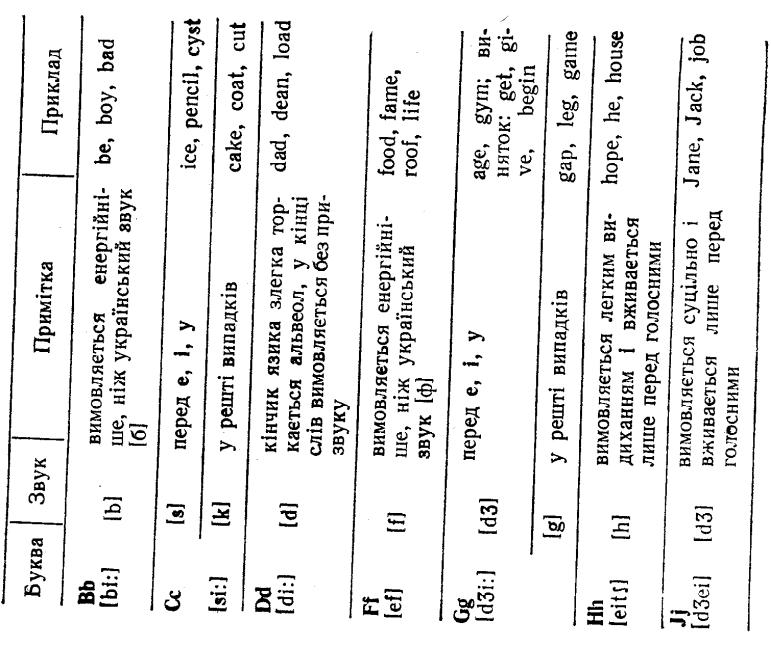
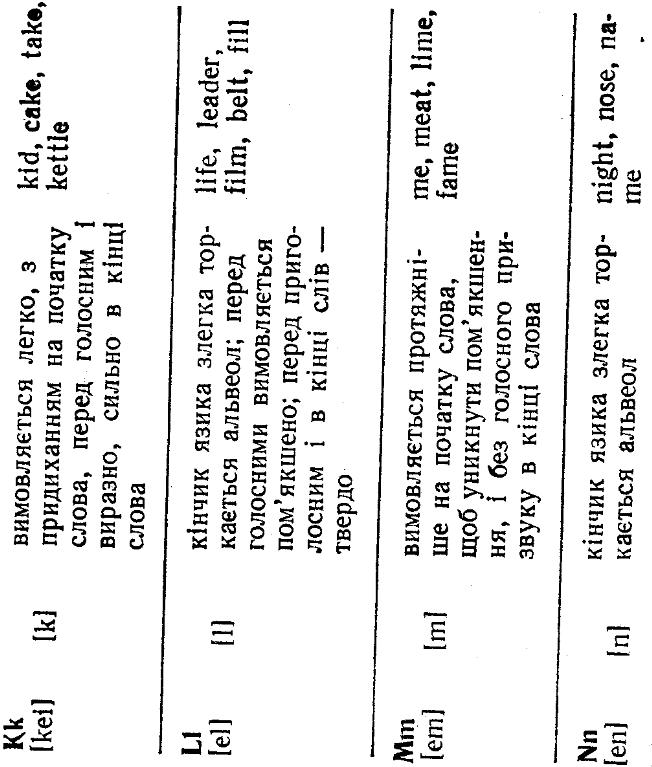
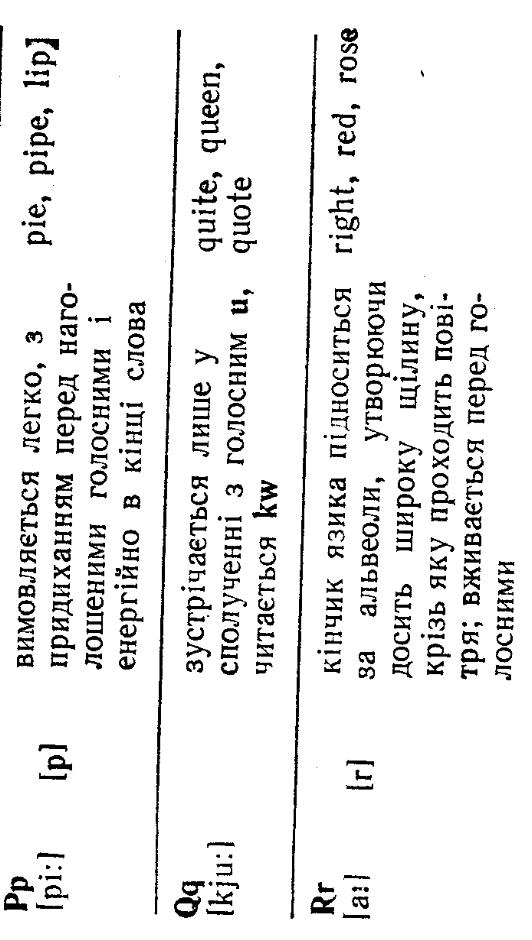
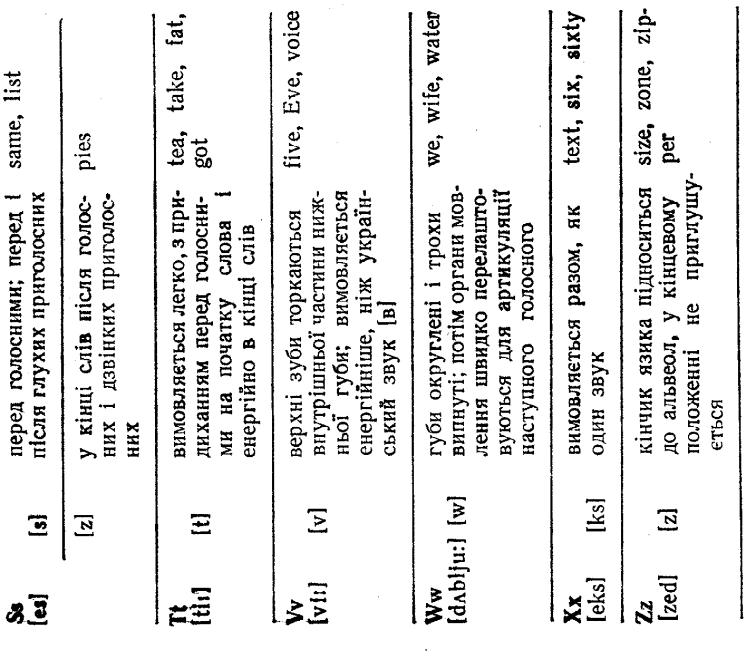
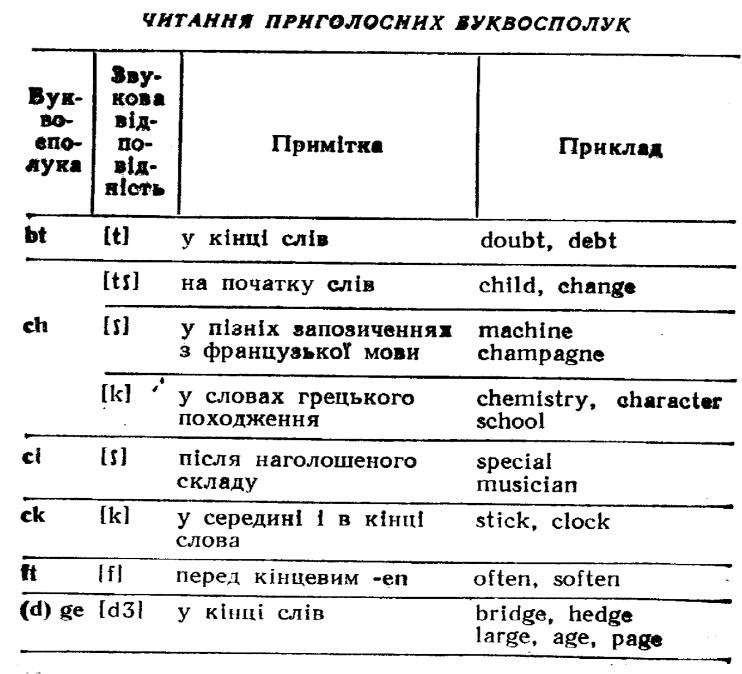
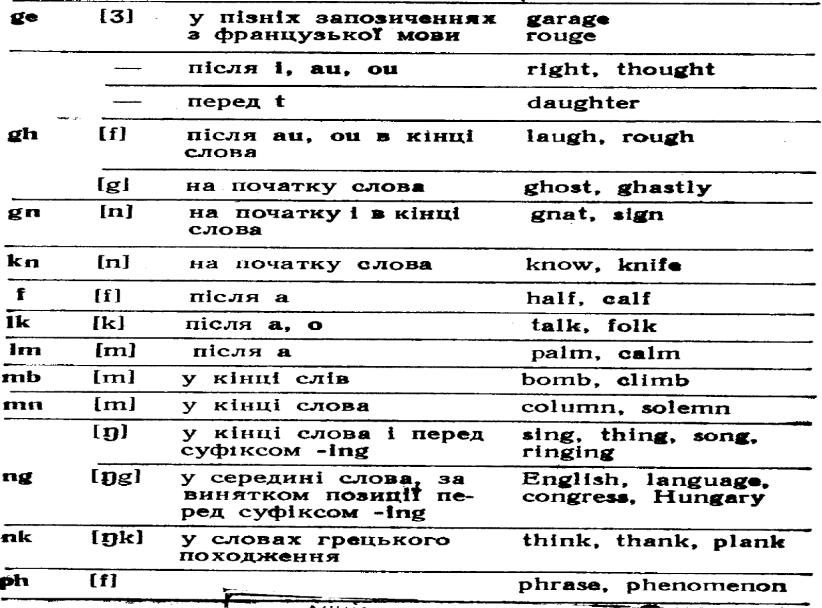

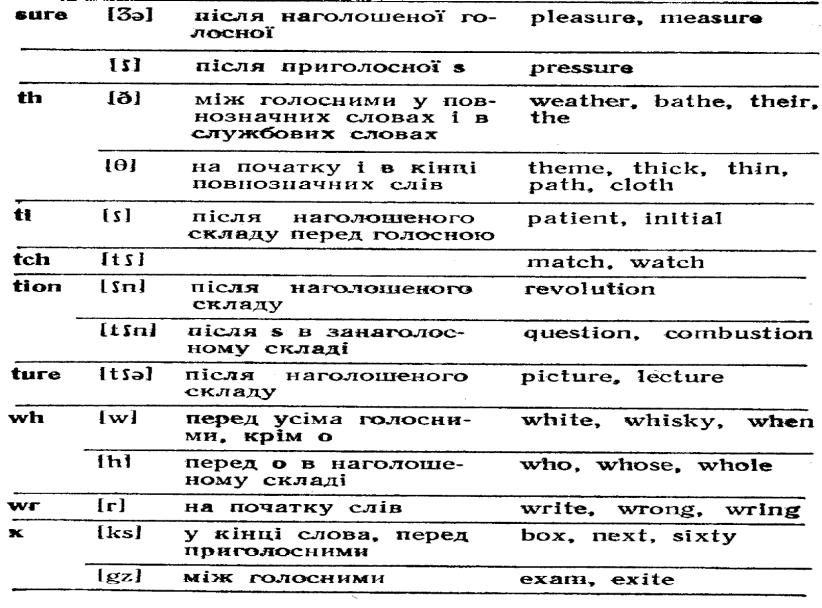
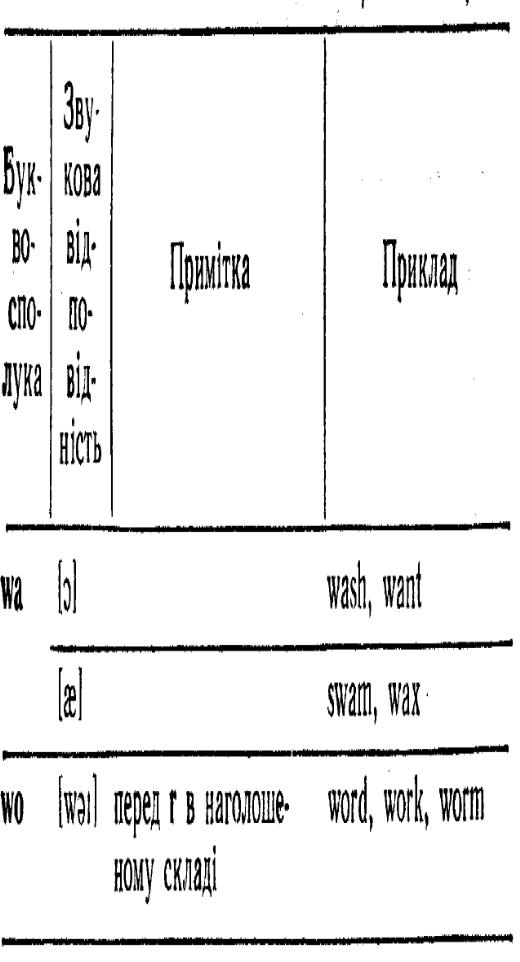
Ex.2. Прочитайте та перекладіть подані нижче слова:
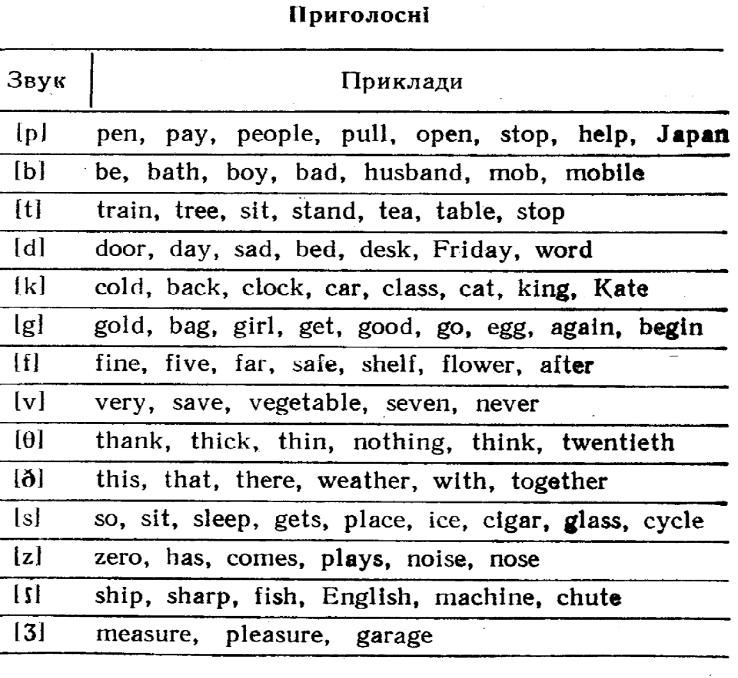

Ex.3. Прочитайте та запам’ятайте наступний граматичний матеріал:
Дієслово to be бути широко вживається і як повнозначне дієслово, і як допоміжне, для утворення різних часових форм інших дієслів. У Present Indefinite воно відмінюється не за загальним правилом:
I am We are
Не is You are
She is They are
It is
В усному мовленні здебільшого вживаються скорочені форми:
I'm We're
He's You're
She's They're
It's
Питальна й заперечна форми Present Indefinite дієслова to be утворюються без допоміжного дієслова to do.
У питальній формі дієслово to be ставиться перед підметом:
Are you a doctor? Ви лікар?
Is your wife at home? Ваша дружина вдома?
У заперечній формі після дієслова to be ставиться частка not:
She is not my friend. Вона не моя подруга.
You are not happy. Ви нещасливі.
В усному мовленні замість is not і are not вживаються переважно скорочені форми isn't і aren't. Am not скороченої форми не має:
He isn't that kind of man. Він не така людина. But you aren't sure. Але ви ж не певні.
У питально-заперечній формі дієслово to be ставиться перед підметом, а частка not - після підмета, але частіше тут вживаються скорочені форми isn't і aren't:
Am I not your friend? Хіба я не твій товариш?
Aren't you tired? Невже ти не стомився?
Isn't he at home? Хіба його немає вдома?
Ex.4. Вставте необхідну форму дієслова to be:
I ... a student.
My father ... not a doctor, he ... a banker.
... your aunt a teacher? — Yes, she ...
... they in the office? — No, they ... not in the office, they… at home.
My brother ... a worker.
... you a driver? Yes, I ...
Those doors ... black.
... your sister a secretary? No, she … not a secretary, she… a student.
... your brother at school/ Yes, he ...
My sister ... at home.
... this your pen? Yes, it ...
This ... my bag.
Those ... his ties.
My uncle ... an office manager.
He ... at work.
This ... a book. These ... maps.
These ... long texts and those .. short texts.
... this book good? Yes, it ...
... your sister at school? No, she… not at school.
That pencil ... not black. It ... red.
Ex.5. Напишіть речення в заперечній та запитальній формі. Дайте короткі відповіді.
Наприклад:
This is a red pen. — This is not a red pen.— Is this a red pen? (Yes, is. No, it isn't).
These are red pens. These are not red pens. Are these red pens? Yes, the are. No, they aren't.
This is a red tie. 7. These are caps.
That is a short text. 8. Those are hats.
Those are big bags. 9. This is his table.
These rooms are clean. 10. His pencil is red.
That pencil is short. 11. My cap is red.
His hat is black. 12. These matches are bad.
Ex.6. Дайте відповіді на запитання:
Is it a large map?
Is this my bag?
Is that match thin or thick?
Is this flat clean?
Is this boy big?
Is Kyiv a big city?
Домашнє завдання:
Ex.1,3. Вивчити правила .
Ex.7. Поставте am, is, are:
1. What ... your name? — My name ... Shirley Frank. 2. What ... your address? — My address ... 175 Grand Central Parkway. 3. What... your phone number? — My phone number ... 718-1930. 4. Where ... you from? — I ... from New York. 5. I ...a pupil. 6. My father ... not a teacher, he ... a scientist. 7. ... your aunt a doctor? — Yes, she ... . 8. ... they at home? — No, they ... not at home, they ...at work. 9. My brother ... a worker. He ... at work. 10. ... you an engineer? — Yes, I ... . 11. ... your sister a typist? — No, she ... not a typist, she ... a student. 12. ... your brother at school? — Yes, he ... . 13. ... your sister at school? — No, she ... not at school. 14. My ... sister ... at home. 15. ... this your watch? — Yes, it ... . 16. She ... an actress. 17. This ... my bag. 18. My uncle ... an office worker. 19. He ... at work. 20. Helen ... a painter. She has some fine pictures. They ... on the walls. She has much paper. It ... on the shelf. The shelf ... brown. It ... on the wall. Helen has a brother. He ... a student. He has a family. His family ... not in St. Petersburg, it ... in Moscow.
Питання дня самоконтролю:
Які приголосні букви ви знаєте?
Як відмінюється дієслово to be?
Unit 3. Правила читання голосних. Дієслово to have.
Ex.1. Прочитайте та запам’ятайте наступний граматичний матеріал:
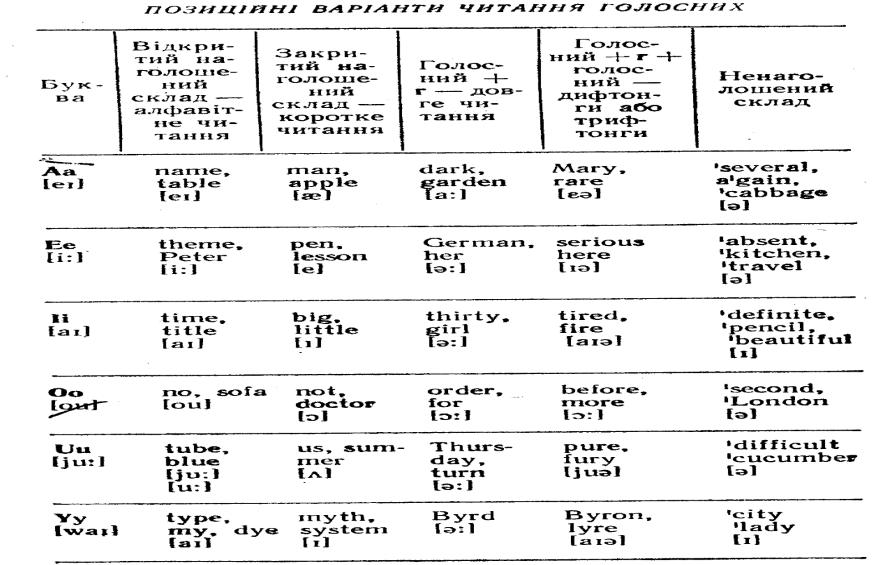
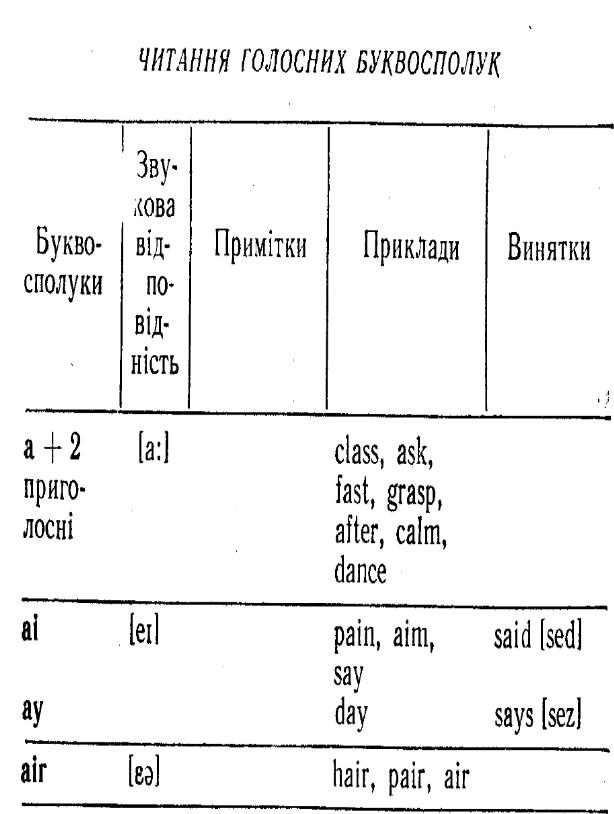
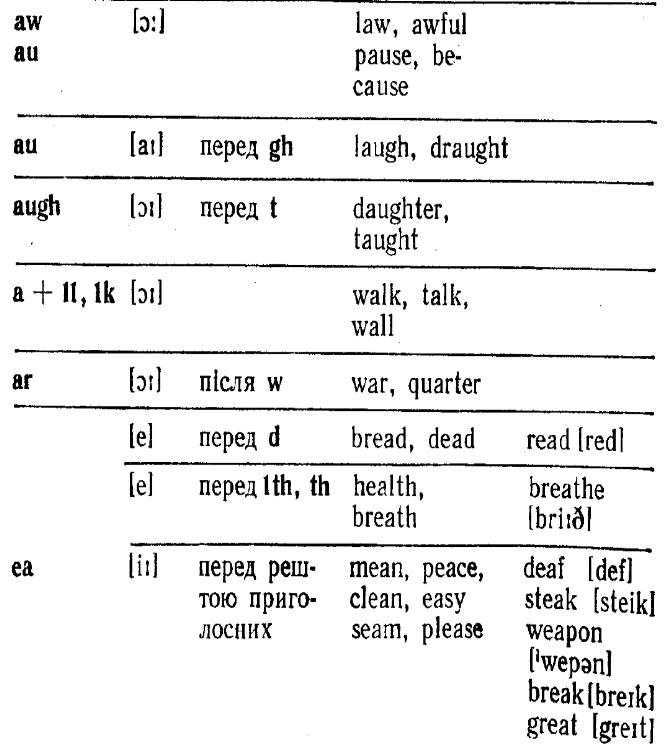
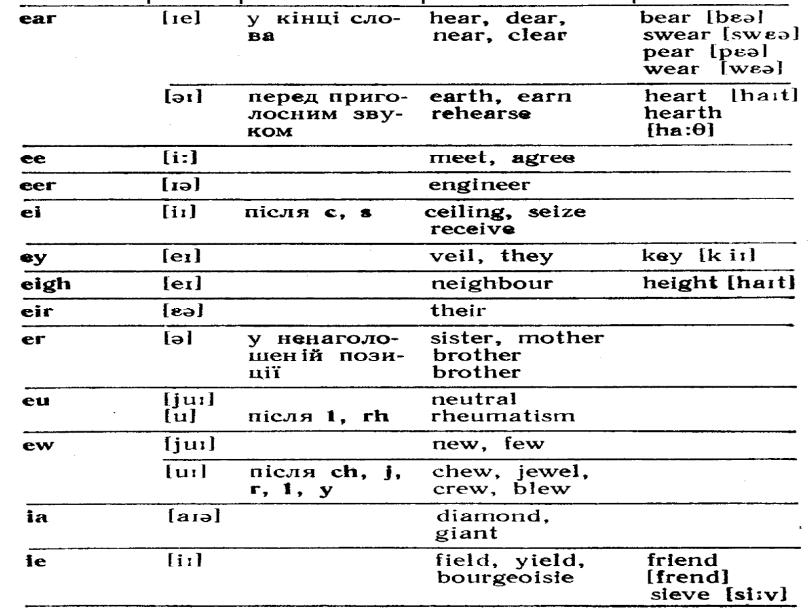

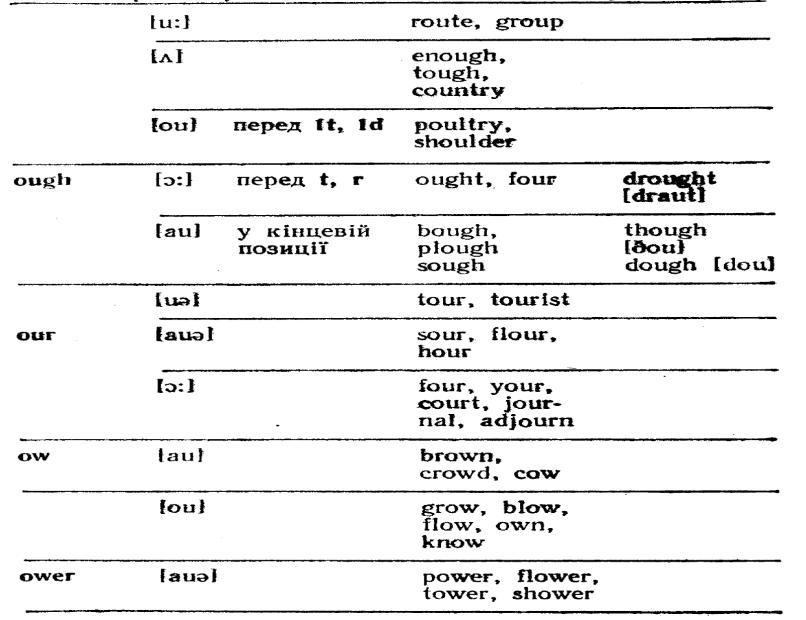
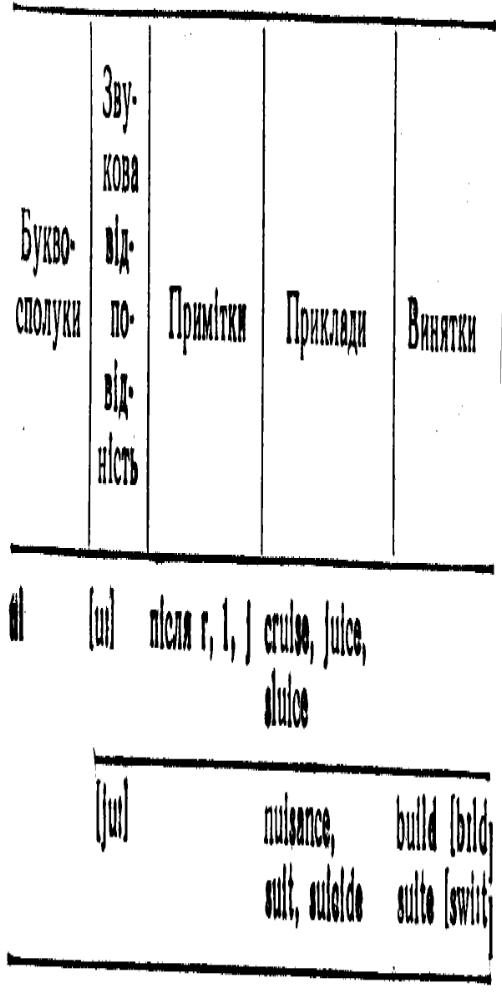
Ex.2. Прочитайте подані нижче слова:
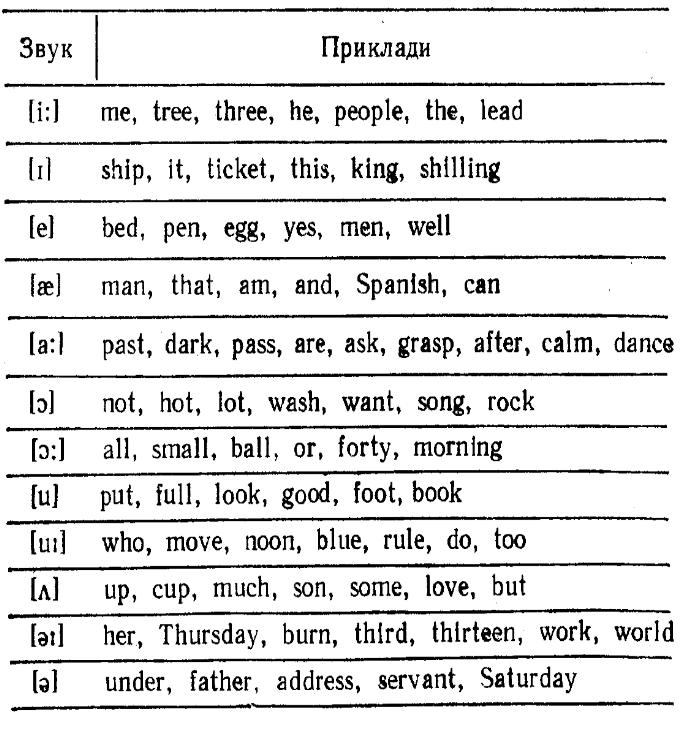
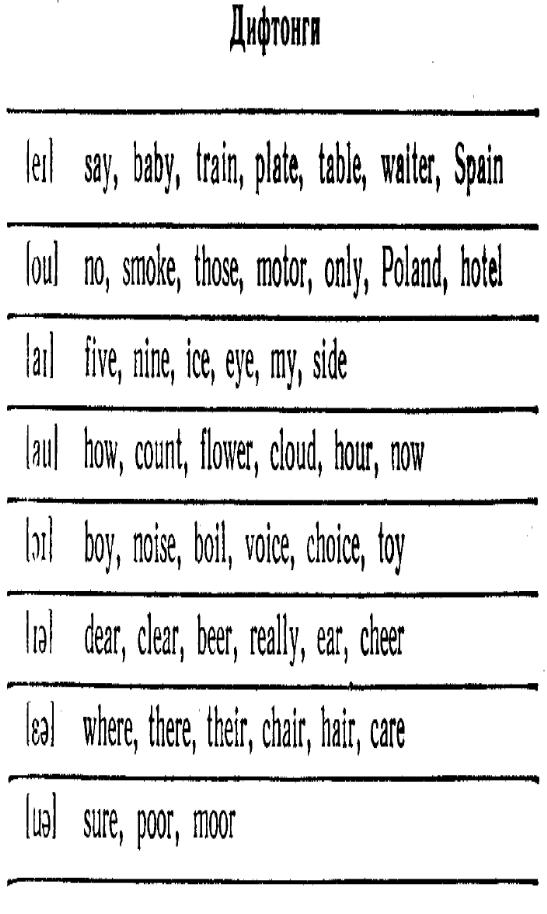
Ex.3. Прочитайте та запам’ятайте наступний граматичний матеріал:
Дієслово to have також вживається і як повнозначне, і як допоміжне. Воно служить для утворення різних часових форм інших дієслів. Відмінювання дієслова to have в Present Simple:
І have
He has
She has
It has
We have
You have
They have
Питальна і заперечна форми Present Simple дієслова to have утворюються без допоміжного дієслова to do.
У питальній формі дієслово to have ставиться перед підметом:
Have you a watch? У вас є годинник?
Has the girl many toys? У дівчини багато іграшок?
Заперечна форма утворюється лише за допомогою частки not, якщо після дієслова to have вжито іменник з:
а) присвійним або вказівним займенником:
I have not your book. У мене немає вашої книги.
б) вказівним займенником або означеним артиклем:
We have not this (the) watch. У нас немає цього годинника.
в) кількісними займенниками або кількісними числівниками:
She has not many (five) English books. У неї немає багато (п’яти) англійських книжок.
Якщо дієслово to have входить до складу виразів:
to have breakfast to have tea (coffee)
to have lunch to have a smoke
to have dinner to have a rest
to have supper to have a walk
то питальна та заперечна форми речень з цими виразами в Present Simple утворюються за допомогою дієслова to do:
Do you have a smoke at night? Ви палите вночі?
I do not have a smoke at night. Я не палю вночі.
Ex.4. Заповніть пропуски:
I … a cat. My cat … three kitten. 2. Nick and Dan … a computer in the room. 3. My uncle … a new sports car. 4. Max … brown eyes and dark hair. 5. We … (not) breakfast at 8 o’clock. 6. He … a lot of books in his own library. 7. He … a lot of books in his own library. 8. … they … enough time to write letter?
Ex.5. Заповніть пропуски. Вивчіть прислів’я. Опишіть ситуації, у яких ти міг би її вжити:
Success … many friends. (В успіху багато друзів.)
Every dog … his day. (Буде й на нашій вулиці свято.)
Every white … its black. (Без світла нема тьми.)
Ex.6. Заповніть таблицю, використовуючи знак «+» для правильного варіанта ы знак «-» -для неправильного.
|
you |
Rita |
Bob and I |
Max |
we |
they |
a cat |
friends |
it |
have |
|
|
|
|
|
|
|
|
|
has |
|
|
|
|
|
|
|
|
|
don't have |
|
|
|
|
|
|
|
|
|
doesn't have |
|
|
|
|
|
|
|
|
|
Домашнє завдання:
Ex.1,3. Вивчити правила.
Ex.7. Контрольне читання та переклад тексту.(Виберіть власний уривок тексту, в якому має бути не менше 15 речень).
Ex.8. Заповніть пропуски поданими словами, поставивши дієслово to have у правильну форму:
to have a good time, to have time, to have a cold, to have a cup of tea
Nick is very busy at school. He doesn’t … to write to his pen-friend very often.
Rita doesn’t like coffee. She usually … for breakfast.
Taras is in bed. He … . He is unwell.
On Sunday we always … together. Mum usually cook very tasty food on Sundays.
Питання дня самоконтролю:
Які голосні букви ви знаєте?
Як відмінюється дієслово to have?
Unit 4 Елементи спілкування . Правила етикету під час знайомства.
Ex.1. Ознайомитися з найбільш поширеними виразами, що використовуються при знайомстві чи при зустрічі та вивчити їх:
Good morning --- Доброго ранку (до 12:00)
Good afternoon --- Доброго дня (з 12:00 до 17:00)
Good evening --- Доброго вечора (до 20:00)
How do you do --- є найбільш формальним виразом, який використовується при представленні однієї особи іншій. Це привітання вимагає такої ж відповіді.
 Let
me
introduce
myself
Let
me
introduce
myself
 Дозвольте
представитися
Дозвольте
представитися
Allow me introduce myself
What is your name? – Як вас звати?
May I ask your name? – Чи можу я запитати ваше ім’я?
Let me introduce my friend – Дозвольте представити мого друга
I would like you to meet Mr… - Я хочу познайомити вас з містером…
Pleased to meet you – Приємно з вами познайомитися
Delighted to meet you – Щаслива з вами познайомитися
We have met before – Ми вже зустрічалися (знайомі)
I know you – Я вас знаю
Вирази, що використовуються при зустрічі
Is that really you? –Це ти?
I haven’t seen you for ages – Давно вас не бачив
I have an appointment for 11 a.m –Мені призначена зустріч на 11 ранку
Welcome! – Вітаю!
 How
are you?
How
are you?
H ow
are you getting on?
Як
справи (життя)?
ow
are you getting on?
Як
справи (життя)?
 How
is life?
How
is life?
What’s new? – Що нового?
 What
is happened?
What
is happened?
 Що
сталося?
Що
сталося?
What is the matter?
Ex.2 Прочитайте та перекладіть діалоги:
- Hi, Jane!
- Hello, Mary! How are you?
- Oh, not bad – a little tired. Jane, I’d like you to meet my brother.
- Nice to meet you, john.
***
- Hi, Maggie!
- Oh, Peter, hello, how are you? Look, I’m in a terrible hurry. The bank closes in 15 minutes.
- Is your bank near here?
- Yes, it’s only three blocks away.
- Get in my car, I’ll give you a lift.
- This is so nice of you, Peter, thank you.
- Don’t mention it.
Ex.3. Прослухайте, прочитайте та перекладіть діалог:
Woman: Hi I'm Jana. What's your name?
Man: Hi Jana. My name's Dominik.
Man: What's your name, please?
Woman: It's Patricia Perez.
Man: Hello. My name's David Cooper.
Woman: Hello. I'm Lisa Smith. Nice to meet you.
Ex.4. Уявіть, що до вас у коледж приїхав студент іноземної країни. Виконайте наступні дії:
А) Представтесь самі і представте своїх одногрупників;
Б) Спитайте у нього, чи не зустрічалися ви раніше;
В) Домовтесь з ним про зустріч на завтра та попрощайтесь.
Ex.5. Прочитайте та перекладіть текст:
What’s in a name?
English people usually have two or three names, they have surname and first (or Christian) name: Bill Johnson, Helen Smith. Bill is the first (or Christian) name. Johnson is a surname.
Some surnames are words for colors: Black, Brown, White or Green. Some are the names of jobs: Baker or Butcher.
Look at these surnames: Johnson, Peterson, Richardson, and Stevenson. They all end with the word “son”. That is: son of John or John’s son - Johnson, son of Peter – Peterson.
Children take their father’s surname and wives usually take their husband’s names.
Many first names come from the Bible: Adam, Mary, Peter, Paul. Many girls’ names come from flowers: Rose, Violet.
As you see names can tell you a lot.
And what do you know about your name and surname?
Ex.6. Прочитайте та перекладіть текст:
Introducing people
There are some main rules of introduction which are useful to remember: men are introduced to women, young people to older ones, old friends to newcomers, and young girls to married. Usually women are not presented to a man unless he is the Head of State or a member of the Royal family. When introducing one says something like:” Mrs. Johnson, may I introduce Mr. Blake? “And then turning to Mrs. Johnson, simply says “Mrs. Johnson”. That is all that’s necessary, but one can say a bit of information which will help the introduced people to start the conversation.
The usual response to the introduction is “How do you do?” which is not a question but a kind of greetings. And the best answer to it is “How do you do?” Sometimes you may say less formally “I am glad to meet you “, “happy to have met you” or just “Hello”.
It is very good to add the name of the person introduced -“I am glad to meet you, Mr. Blake”. If you don’t remember the name it is enough simply to ask “What’s your name, please?” or “Could you repeat your name?” Men may stand when introduced, ladies may remain seated.
British and American people usually shake hands especially when formally introduced but they don’t always shake hands with people they see often. When an Englishman passes a friend in the street he only touches his hat.
Usually they smile and say: Good morning, Good afternoon, good evening, and hello.
When two businessmen meet, they usually shake hands.
Ex.7.Опрацюйте дану таблицю з гороскопом:
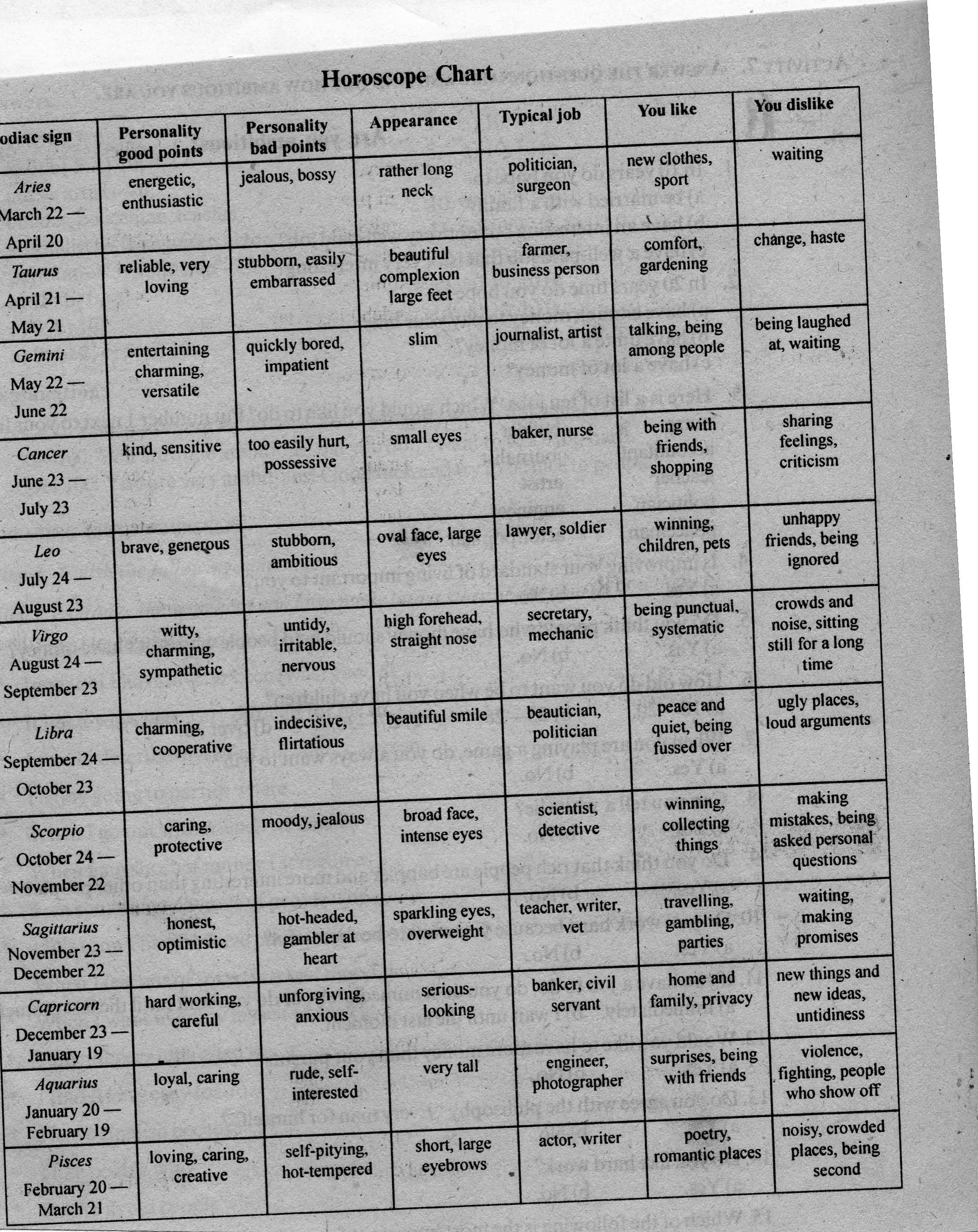
Ex.8. Утворіть правильно питання та дайте на них відповіді:
What is the main rules of introduction?
Are the simplest way of introduction?
the usual response to introduction?
expected as an answer to “How do you do?”
Ex.9. З якими твердженнями ви погоджуєтесь, а з якими ні. Поясніть свою точку зору:
A) To meet a lot of new people is not interesting.
B) The most important thing is to have a lot of money and health.
C) Be nice to people and people‘ll be nice to you.
D) Every man for himself.
Ex.10. Перекладіть речення англійською мовою:
1. Моя сестра не студентка.
2. Йому 1 рік.
3. Моя бабуся живе в Києві.
4.У нас є 2 двоюрідних сестри.
5.У мене є сім я.
6.Моє прізвище Павленко.
7. Ви студент?
8.Вона не з Києва, вона зі Львова.
9.Де ти живеш?
10.Звідки ти?
Домашнє завдання:
Ex.1. Вивчити новий лексичний матеріал.
Ex.11. Підготувати повідомлення «Що означають моє ім’я та прізвище? »
Ex.12. Підготувати переказ тексту «Introducing people”
Питання для самоконтролю:
Які вирази що використовуються при знайомстві?
Як утворилися найбільш поширені англійські прізвища?
What are the main rules of introduction?
What does the phrase “How do you do?” mean?
Unit 5. Про себе. Означений та неозначений артикль.
Ex.1. Прочитайте та перекладіть текст:
